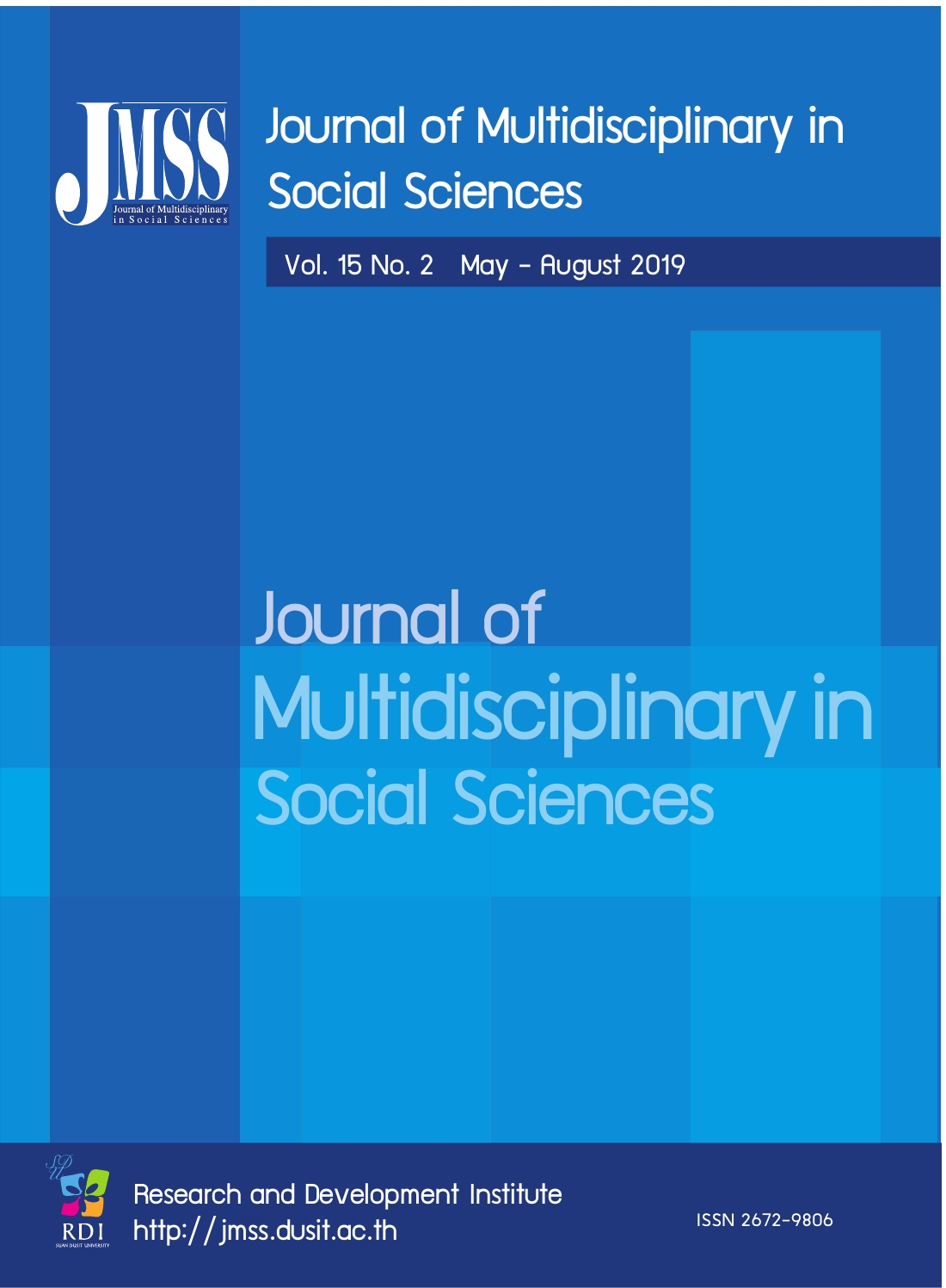Development of a Causal Model of Influence on Gratitude (katanyu) of Thais in an Aging Society
Keywords:
Gratitude, Casual Model, Development, Structural Equation ModelAbstract
This research aimed to develop a causal model of influences on behavior expressing “Gratitude of Thais” and proposed a formation of cultivating “Gratitude”. The researchers collected in-depth interview data from distinguished experts and sample groups who revered in their gratitude towards mothers across five regions of Thailand, in a total of 2,331 people. The researchers deployed in-depth interview techniques for 120 samples and organized discussion sessions with experts in each region, in order to examine a causal model and propose a formation of cultivating “Gratitude of Thais”. The data analysis was conducted on preliminary statistics and the Structural Equation Model (SEM) by using AMOS program and data analysis.
Results were as follows:
1. The development of causal model of influencing on behavior expressing gratitude of Thais in this research was correlated and consistent with Theoretical Model; by defining /df = 1.059 p-Value = .331 GFI = .996 CFI = 1.000 and RMSEA = .996. In the model, direct variables highly influencing on behavior were a good role model of mother and positive family relationship with a value of .414 and the second variable was family raising their children with good principles with a value of .652. Indirect variables highly influencing on behavior was appreciation of children in repaying kindness of mother through family raising their children with good principles with a value of .416.
2. The cultivation the formation of “Gratitude” was a main duty of the family institution, particularly for the elderly, non-working or sick mothers. A good role model of mother reflected the perception of “Gratitude” and ways of practice for their own children. The purpose was to cultivate moral values and appreciation of children in repaying kindness to the mothers, including physical and mental health care and not let the elderly be neglected. Local administration organizations supported the integration of networks such as temples, schools, public health services and hospitals, health service volunteers, village leaders, press, companies, the private sector and so on. “The Gratitude House”, the so-called “Baan Katawethitakhun”, was founded within the community for the elderly who had been neglected or insufficiently supported from their own children. They needed help from the qualified local administrative officers, in line with good standards, because taking care of the elderly was burdensome, tiresome and stressful.
References
Bhikku, P. (1995). Katanyookatawatee Pen Kruangmai Kong Khon Dee. Bangkok: Dharma
Buntum, S. (1998). Selected Factors of the Family Related to the Ethics of Katanyu Kathawathee of 1st year High School Students in Khon Kaen (Master’s thesis). Mahasarakam: Mahasarakam University.
Center for Promotion and Development of Power of the Righteous Land (Center for Righteousness) (2008). A synthesis on Research on Virtuousness and Ethics in Thailand and other Countries. Bangkok: Center for Virtuousness.
Chanpremjit, R., Rukpolmuang, C. & Prachuabmoh, V. (2015). Developmnent of Learning Principles by Using the Community as Base. Education, 44(3), 160-175.
Foundation of the Institute for Research and Development of the Thai Elderly (2009). Towards a Society that does not Neglect on the Path that is Friendly to the Elderly. Bangkok: Foundation of the Institute for Research and Development of the Thai Elderly.
Jeerapunthepa, J. (2009). Gratitude (Katannu-katavedi) in th Way of Life of Present Thai Buddhists (Master’s thesis). Bangkok: Thammasat University.
Kaimanee, P. T. & Somsak, S. (2007). Influence of the Family in Instilling Katanyu Kathawathee in Urban areas of Khon Kaen province. Journal of Research, Khon Kaen University, 7,(3), 1-14.
Khunchit, P. (2006). A study on Jariyatham (ethics) on Katanyu Kathawathee and Practice of Children towards Parents: A study of high school students, Rachavitnit School Bangkhae Punkum (Master’s thesis). Bangkok: Chulalongkorn University.
Komin, S. & Samakarn, S. (1979). Values and Thai Values System: Tools in Measuremen and surveying. Research Office, Nation Institute of Development Administration.
Office of the National Economic and Social Development Board (2016). Document from the Brainstorming for the Draft NESDB 12th Plan (2017-2022). Bangkok:
Office of the National Economic and Social Development Board. Prachuabmoh, V. et.al., (2010). Report on the Study of the National Elderly Project Adjustment (2002-2021). Bangkok: Chulalongkorn University.
Pratchyasete, P. (2005). Relationship of Selected Factors and Kattanyu Kathawathee of Students in 1st year Secondary School, Rayong province (Master’s thesis). Bangkok: Srinakarinviroj University. Ruksuthi, S. (2003). Technique for Develop Intregrated curriculum. Bangkok: Pattanakran.
Suphap, S. (2002). Thai Social and Culture: Values:Family: Religion:Tradition. Bangkok: Thaiwattanapanich Printing Publishing.
The Institute for Population and Social Research (2014). The Aging of Thailand. Nakhon Pathom: Mahidol Univerity.
Waithayalertsuk, N. (2016). Lessons Learnt on Employment and Human Resource Management. Pathumthani: Thammasat University.
Weerapunthep, J. (2009). Katanyu Kathawathee in the Lives of Buddhist Thais (Master’s thesis). Bangkok: Thammasat University.
Wiratchai, N. (1999). Model Lisrel Statistical analysis for research. Bangkok: Chulalongkorn University.
Downloads
Published
How to Cite
Issue
Section
License

This work is licensed under a Creative Commons Attribution-NonCommercial-NoDerivatives 4.0 International License.








